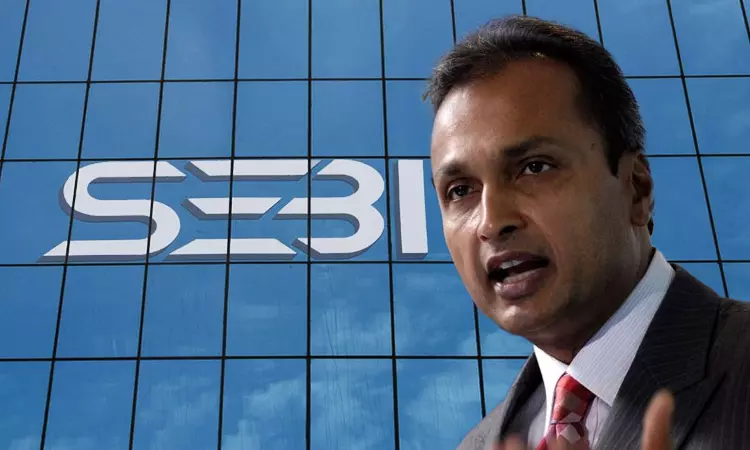RBI’s Unified Lending Interface (ULI): A Revolutionary Step in Credit Access
Introduction to ULI: The Reserve Bank of India (RBI) is set to launch the Unified Lending Interface (ULI), a new digital platform designed to streamline the lending process across India. The ULI is poised to transform the credit landscape in a manner similar to how the Unified Payments Interface (UPI) revolutionized the payments ecosystem.
- Announcement by RBI Governor: RBI Governor Shaktikanta Das recently announced the forthcoming nationwide launch of the ULI, which follows a successful pilot project initiated in August 2022. The ULI aims to create a frictionless, efficient, and scalable lending process, with a particular focus on reducing costs and speeding up disbursements, especially for smaller and rural borrowers.
- What is Unified Lending Interface (ULI)? The ULI is a digital platform that facilitates a seamless, consent-based flow of information between borrowers and lenders. It consolidates data from various sources, including Central and State governments, banks, credit information companies, and digital identity authorities, into a unified system. This integration allows for quicker and more efficient credit appraisals, reducing the need for extensive documentation and multiple technical integrations.
Key Features and Benefits:
- Seamless Information Flow: The ULI will provide lenders with digital access to financial and non-financial data, such as land records, stored in various disparate systems. This will enable quicker and more accurate credit assessments.
- Standardized APIs: The platform uses common and standardized Application Programming Interfaces (APIs) that allow for easy integration and a ‘plug and play’ approach. This reduces the complexity of technical integrations and ensures that lenders can access the necessary data with minimal friction.
- Time and Cost Efficiency: By centralizing and digitizing the data required for credit appraisal, the ULI significantly reduces the time taken to process loans, especially for smaller and rural borrowers. This efficiency also leads to lower costs for both lenders and borrowers.
- Increased Credit Access: The ULI is expected to cater to the large unmet demand for credit across various sectors, including agriculture and Micro, Small, and Medium Enterprises (MSMEs). By simplifying the lending process, the platform will make it easier for these sectors to access much-needed funds.
- The “New Trinity” – JAM-UPI-ULI: The ULI is seen as a key addition to India’s digital infrastructure, alongside the JAM (Jan Dhan, Aadhaar, Mobile) trinity and UPI. Together, these systems represent a significant leap forward in financial inclusion and digital empowerment.
What is Unified Payments Interface (UPI)?
UPI, launched in April 2016 by the National Payments Corporation of India (NPCI), is a real-time payment system that integrates multiple bank accounts into a single mobile application. It allows for seamless fund transfers, merchant payments, and peer-to-peer transactions, all accessible around the clock through a mobile device. UPI has played a crucial role in the growth of retail digital payments in India, becoming a robust, cost-effective, and portable payment solution that has garnered global interest.
SEBI’s Crackdown on Anil Ambani: The GPC Loans Controversy and Market Ban
Why in News:
Anil Ambani, Chairman of the Reliance ADA Group, has been banned by SEBI from the stock market for five years and fined Rs 25 crore. This follows an investigation revealing that Ambani approved fraudulent GPC loans worth Rs 1,472.16 crore through Reliance Home Finance Ltd. (RHFL) between February and March 2019, leading to significant financial losses and regulatory action.

About the GPC Loans Controversy:
Background:
- RHFL Board Directive: On February 11, 2019, RHFL’s board instructed the company to stop disbursing GPC loans due to concerns over their high risk.
- Continued Disbursement: Despite this directive, Anil Ambani, as Group Head, approved 14 GPC loan applications totaling Rs 1,472.16 crore.
SEBI’s Findings:
- Dubious Loans: By March 31, 2019, nearly half of RHFL’s assets were tied up in GPC loans disbursed to questionable and credit-unworthy entities.
- ECL Manipulation: RHFL’s FY18-19 financials presented a low Expected Credit Loss (ECL), masking the true risk of these loans.
- Due Diligence Failures: SEBI discovered repeated and significant deviations from standard credit due diligence processes in the approval of these loans.
- Fraudulent Scheme: SEBI concluded that Ambani and other involved entities were engaged in a fraudulent scheme, leading to the loans being declared as Non-Performing Assets (NPAs).
Transfer of Funds:
- Beneficiary Entities: The GPC loans were structured to benefit entities related to the Reliance ADA Group, indicating a deliberate attempt to transfer funds to these companies.
- Ownership and Management: The ownership and management patterns of both lender and borrower companies pointed to Ambani’s direct or indirect benefit from the fund transfers.
The Great Moon Hoax of 1835: A Colossal Prank in the Age of Early Astronomy
Why in News:
On August 25, 1835, The New York Sun published a series of six articles claiming the discovery of life on the Moon, including winged humans. Known as the Great Moon Hoax, the sensational reports captivated readers worldwide, even though the entire story was a fabrication. The hoax highlighted the power of the press and the gullibility of the public in the early 19th century.

About the Great Moon Hoax:
The Articles’ Claims:
- Discovery: The articles alleged that Sir John Herschel, a renowned astronomer, had discovered life on the Moon using a powerful new telescope.
- Inhabitants: The reports described an array of fantastical creatures, including forests, upright beavers, unicorns, and most famously, winged human-like beings called “man-bats” (Vespertilio-homo).
- Illustrations: The newspaper included illustrations to make the claims appear more credible.
Origins of the Hoax:
- Publication: The New York Sun, a penny newspaper aimed at a broad readership, conceived the hoax to increase circulation and mock the religious influence on science.
- Richard Adams Locke: The hoax was orchestrated by Locke, who intended to satirize the field of “religious astronomy” and the wild speculations of figures like Reverend Thomas Dick, who claimed that the Moon was populated by billions.
Public Reaction:
- Belief and Reproduction: The articles were widely believed and reprinted in other newspapers. Some praised the supposed discoveries, while others remained neutral, leaving readers to decide the truth for themselves.
- Aftermath: Despite eventually admitting the hoax on September 16, 1835, The Sun’s readership continued to grow, showing the power of sensationalism.
Impact and Legacy:
- Unexpected Success: Locke’s satirical intent went unnoticed as the public, familiar with similar religious astronomical claims, took the reports seriously.
- Criticism: Notable figures like Edgar Allan Poe criticized the hoax, particularly due to its resemblance to his own fictional work about a journey to the Moon. Poe was simultaneously impressed by the hoax’s scale and disappointed by the public’s gullibility.
Significance
- Media Influence: The hoax underscored the influence of the press and the challenges of verifying information in an era with limited trustworthy sources.
- Cultural Reflection: It reflected the period’s fascination with astronomy and the blurred lines between science and fantasy in the public imagination.




